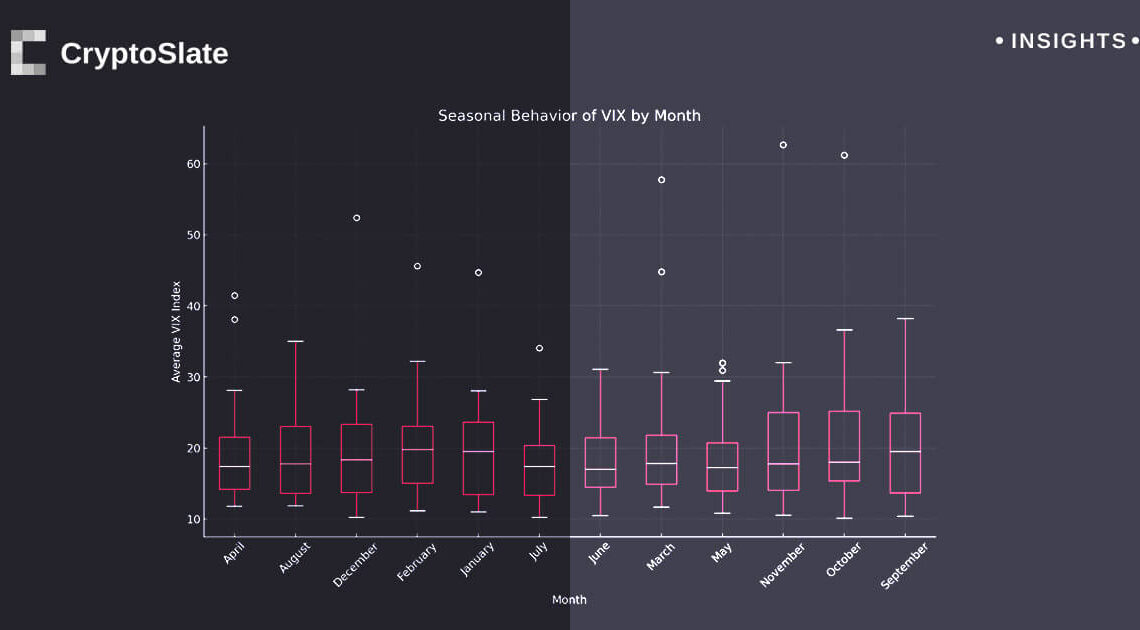Quick Take
An analysis of the CBOE Volatility Index (VIX), a critical market indicator often used to measure the market’s expectation of future volatility, reveals intriguing patterns. The evaluation of average daily change in the VIX from 1990 to 2023 indicates a propensity for the index to dip markedly on Fridays, with Tuesdays trailing. This trend substantiates the existing theory of VIX compression on Fridays, adding empirical validation to this common market belief.
On a broader scale, a boxplot distribution of the average VIX index across each month of these years unveils seasonal tendencies. October and November, characterized by wider VIX distributions, are indicative of heightened variability. This observation reinforces the perception of these months being more prone to volatility. On the flip side, months such as May and June exhibit lower VIX averages, signaling periods of reduced volatility.
Support authors and subscribe to content
This is premium stuff. Subscribe to read the entire article.











